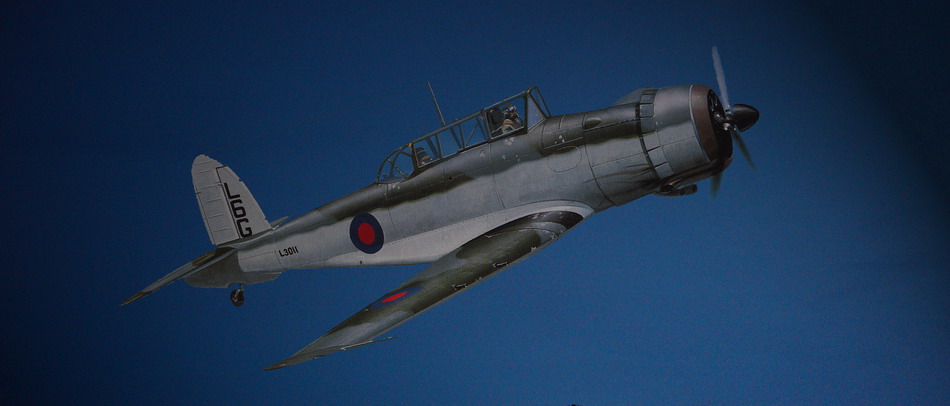


|
BLACKBURN B-24 SKUA I
Designed by G E Petty to Specification 0.27/34, the Blackburn Skua was the first deck-landing monoplane fighter-bomber produced for the Fleet Air Arm. The prototype, with 840 hp Mercury IX, flew on February 9, 1937, and production aircraft to Specification 25/36, with the 890 hp Perseus XII engine, began to appear in 1938, the first being flown on August 28. Production totalled 190 and was completed by March 1940. The Blackburn Skua had an armament of four 0.303-in (7.7-mm) Browning machine guns in the wings plus one Lewis gun of the same calibre on a pillar mounting in the rear cockpit, and carried one 500-lb (227-kg) bomb on a retractable ejector arm under the fuselage for dive bombing plus eight 30-lb (13.6-kg) practice bombs under the wings. First deliveries were made to Nos 800 and 803 Sqns in late 1938, and Nos 801 and 806 equipped on the type in 1939, but the Blackburn Skua was withdrawn from front-line service by August 1941, whereafter several continued in use for advanced training and for target-towing, for which latter role the final production batches were equipped from the outset. The Skua was the Fleet Air Arm's first fighter/dive-bomber and its first operational monoplane. The Skua was also the first radial-engined all-metal cantilever low-wing monoplane with folding wings, flaps, a retractable landing gear and variable-pitch propeller to be produced in Britain. It was first flown in prototype form on 9 February 1937. The crew of two sat in a glazed cabin, the rear-gunner being armed with one Lewis gun and the pilot with four Browning guns mounted in the wings. One 227kg armour-piercing bomb was carried under the fuselage. To meet the Royal Navy's ugent requirements 190 Skuas were ordered in July 1936 (six months before the prototype flew) and deliveries were completed in March 1940. Skuas re-equipped Nos 800 and 803 Squadrons on board the aircraft carrier HMS Ark Royal and No 801 on board HMS Furious. A Dornier Do 18 flying-boat - the first enemy aircraft shot down during World War II by the FAA - fell to the guns of a Skua of No 803 Squadron piloted by Lt B. S. McEwen off Heligoland on 25 September 1939. Although quickly replaced as a fighter, it was a very effective dive-bomber, its greatest success being the sinking of the German cruiser Konigsberg in Bergen Harbour on 10 April 1940, which was attacked by seven Skuas of No 800 Squadron led by Capt R. T. Partridge RM and nine Skuas of No 803 Squadron led by Lt W. P. Lucy RN. This involved a long-distance night crossing from Hatston, Orkney. The majority were lost 11 days later when both squadrons embarked on Ark Royal to cover the Narvik operations. In June 1940 No 801 Squadron operated over the Dunkirk beaches from a temporary base at Detling, Kent. After brief operations on board Ark Royal and Argus in the Mediterranean, Skuas were relegated to target-towing in distinctive diagonal black and yellow stripes.
|
||||||||||||||||||||||||||||||||||||||||||||||||||||
